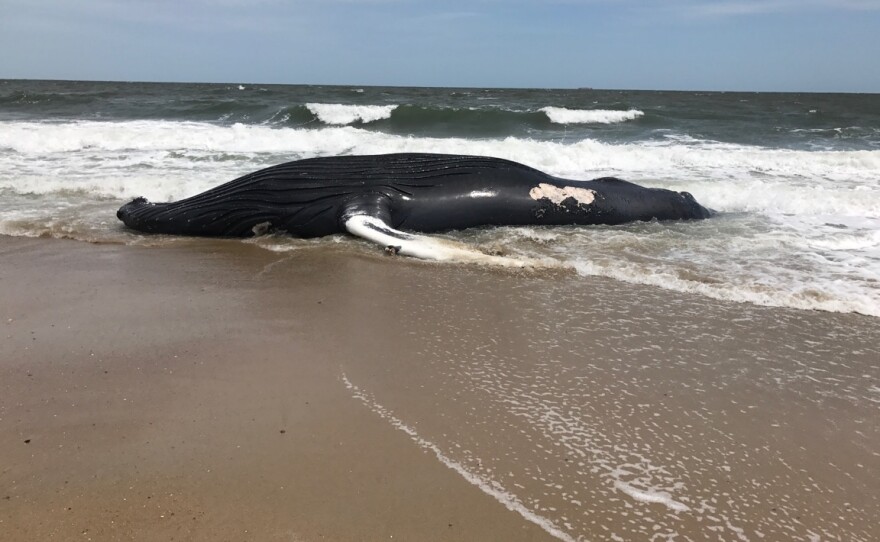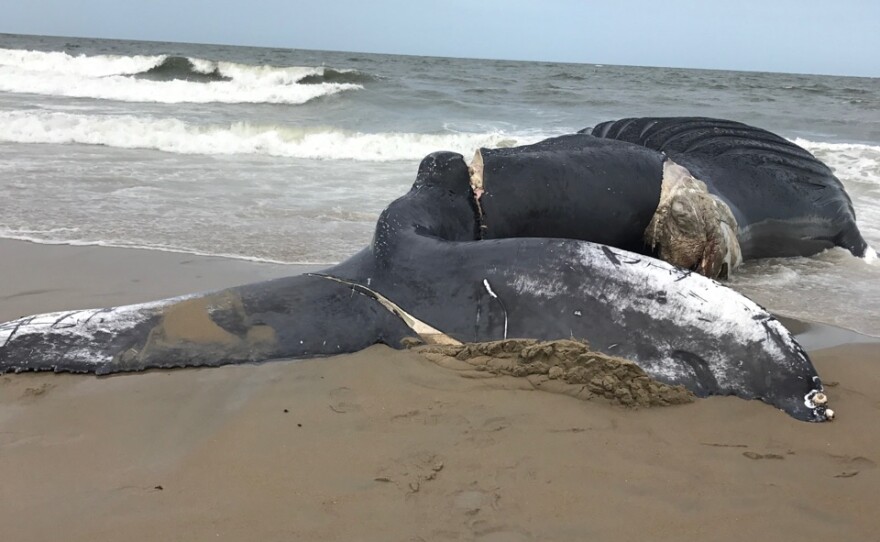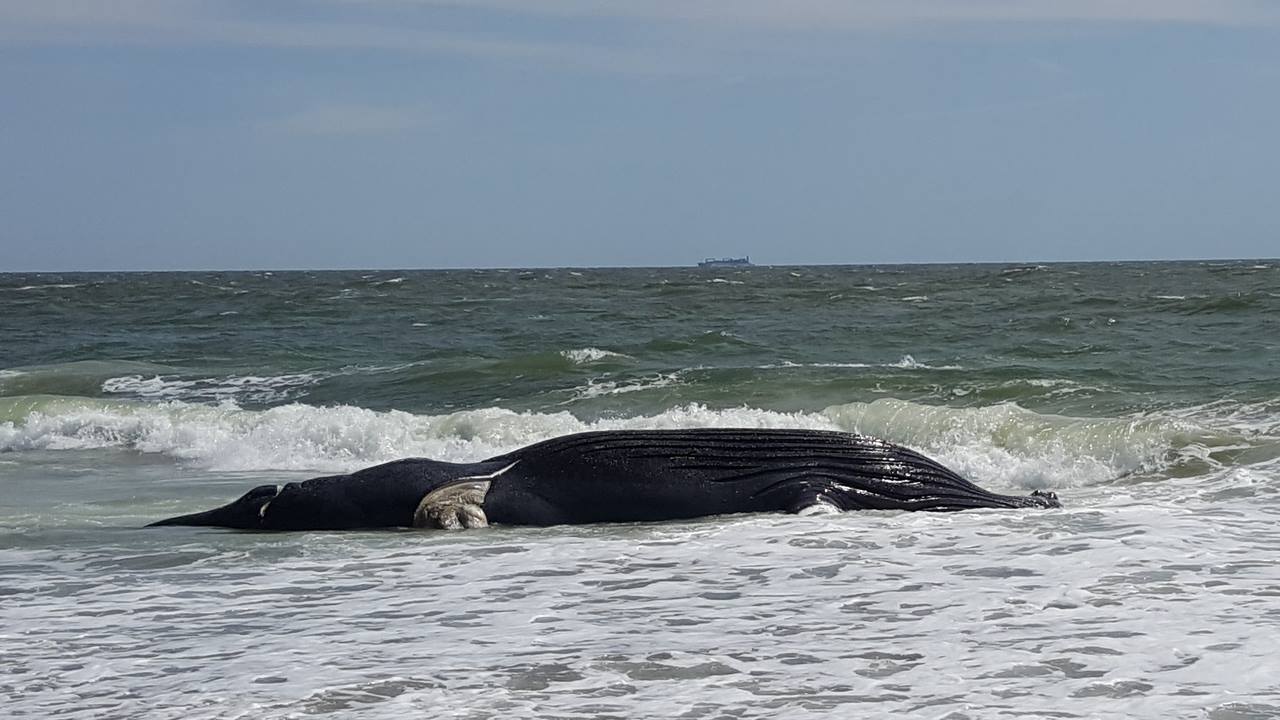
A dead whale washed ashore in Rehoboth Beach Thursday and is the fifth humpback whale to wash up in Delaware in less than a year.
Suzanne Thurman, the executive director of the Marine Education Research and Rehabilitation Institute, said the whale was first reported Thursday morning heading north of Rehoboth Beach. It started to reach land near Deauville Beach located off of Henlopen Avenue, but continued to North Shores, just north of Rehoboth Beach.
Responders arrived at the scene to secure ropes around the whale’s tail. Department of Natural Resources and Environmental Control officials pulled the whale out and towed it to Gordons Pond, where it will decompose.
Thurman said the whale is 37 feet and 11 inches long and 1500 pounds per foot – weighing nearly 29 tons total. MERR could not perform a full necropsy during the stranding response because the sun had almost set, but Thurman said after evaluating the carcass, she determined it is a young male humpback whale.
“There may be some preliminary evidence suggesting that there was some blunt force trauma involved, such as a large ship strike that impacted the lower jaw,” Thurman said.
Thurman said they can’t finish the necropsy because of an impending storm Friday, but she said the whale was far too decomposed to yield any more information beyond what MERR volunteers uncovered Thursday.
“The parts of the whale I was able to examine showed me the organs and the tissues were so degraded from decomposition, much more so than it appeared externally,” Thurman said.
This is the fifth humpback whale death in Delaware in the last 10 months, and the 43rd on the East Coast from 2016 to the present.
A fourth humpback whale washed up at Port Mahon in Kent County nearly two weeks ago.
Both were confirmed humpback whales after the National Oceanic and Atmospheric Administration declared 41 humpback whale deaths from Maine to North Carolina since 2016 an “unusual mortality event” – calling a need for investigation into the cause. An unusual mortality event is “a stranding that is unexpected; involves a significant die-off of any marine mammal population; and demands immediate response,” according to the Marine Mammal Protection Act.
“Certainly it’s a tragedy because these animals are at the very least threatened and have been listed as an endangered species,” Thurman said. “To have animals that have such a limited population – animals that are so highly intelligent and just lead their lives in such a gentle manner – to have so many of them dying in a very short period of time in a fairly concentrated area is of great concern.”

When NOAA announced the 41 humpback whale deaths last week, officials said 20 have been examined and 10 seem to have been hit by ships.
In an email to Delaware Public Media, NOAA Fisheries responded to Delaware’s latest humpback whale death saying the five cases within 10 months is very unusual. Mendy Garron, a stranding coordinator for NOAA Fisheries in the Greater Atlantic Region, said from 2000 to 2016, Delaware only had two strandings – one in December 2004 and another in October 2006.
“NOAA Fisheries is working on forming an investigative team of independent scientists and stranding network partners, who can help us investigate why the whales are stranding,” Garron wrote, in an email. “The investigation could take months to years to complete. The investigative team will look at a variety of factors to assess what is causing elevated humpback deaths, including vessel strikes, environmental conditions, and changes in whale distribution and habitat use.”

Thurman said she wonders if the recent surge in humpback whale mortalities could be related to underlying conditions or disease, but that has not been confirmed yet.
“If disease is present and if there’s a specific disease that can be determined and attributed to this rash of humpback whale deaths, then that will have the opportunity to come out thanks to the UME,” Thurman said.
MERR will soon submit genetic samples and data to NOAA which will help NOAA determine more about the mammal.








